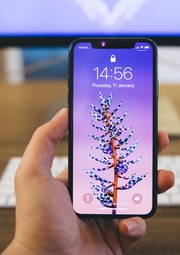Can Excessive Screen Time Fuel Compulsive Behaviors and Addictive Patterns?
Every day, our lives grow more intertwined with technology. This shift brings numerous advantages but also introduces some challenges. From the moment we open our eyes in the morning until we close them at night, we’re constantly connected through various gadgets that serve as our windows to the outside world.
This constant connectivity brings to light a significant concern: the possibility that too much screen time could encourage addictive behaviors and patterns. Here we aim to dissect how our engagement with technology affects our sleep habits, mental health, and overall wellness.
Grasping this connection is vital for safeguarding our health and that of our communities as we move deeper into a digital-dominated era.
Understanding screen time
Smartphones and digital devices have drastically altered our interaction with the world and information at large. They’ve reshaped our entertainment, communication, and work habits. Concerningly, new studies show a significant increase in our daily screen time, with some individuals clocking in more than 11 hours a day attached to their devices. This development is not surprising, considering the pervasive role of technology in every aspect of our daily activities.
A notable study from Harvard Medical School focuses on the quality of screen time, examining its influence on brain development and its effects on sleep patterns, particularly among children and teenagers. Recognizing the risks associated with excessive screen use and finding ways to mitigate its effects are crucial steps toward healthier living.

Unfortunately, some people spend up to 11 hours on their phones daily!
The psychology behind screen usage
The allure of phones lies in their ability to fulfill diverse human needs quickly and efficiently. They provide instant gratification, a sense of social connection, and endless avenues for information and entertainment. This multifaceted appeal is rooted in the brain’s reward system. When we engage with screens, especially in activities like gaming or social media browsing, our brain releases dopamine, a neurotransmitter linked to pleasure and reward. This release can create a feedback loop, reinforcing usage and making it an increasingly desirable activity.
Delving into digital addiction causes and symptoms, we find that this pursuit of digital interaction begins to rewire the brain’s reward pathways. It can potentially lead to compulsive use patterns that resemble those seen in other forms of addiction. Understanding these psychological mechanisms is key to addressing the challenges posed by our digital lives.
Compulsive Behaviors and Addictive Patterns
Getting to the bottom of the impact of screen time requires understanding its connection to compulsive behaviors and addictive patterns. Despite negative consequences, these behaviors are characterized by an irresistible urge to engage in an activity. In more simple words, it means letting screen usage dominate your life. People who have this issue prioritize screen time over everything else and experience withdrawal symptoms when they are not using it.
Looking at digital addiction more closely reveals the link between excessive screen time and the risk of developing addictive behaviors. Specifically, it highlights the importance of conscious and regulated use of technology in our daily lives and the need for awareness and intervention in managing our digital interactions.
Navigating the digital landscape responsibly
Considering all these issues, responsibly navigating the digital landscape is very important. Thus, we must educate ourselves and the younger generations about all the risks of too much screen time. Also, we must understand the mechanics of this addiction and work on creating a healthier relationship with technology. Digital literacy should be taught and promoted in schools, workplaces, and family environments. Encouraging activities that improve our physical, mental, and social well-being away from the screens is also important.
In addition, policymakers and technology companies should be called upon to consider the implications of digital products. Specifically, they should advocate for designs that promote healthier usage patterns. If we all work together, we can extract the benefits of technology while minimizing its effects on our mental health.
Impact of excessive screen time on mental and physical health
Health issues that can arise from too much screen time are eye strain, disrupted sleep patterns due to blue light exposure, and a sedentary lifestyle.
However, the psychological consequences can be much harder to come back from. Using smartphones and other devices too much is not just a behavioral concern. Over time, excessive screen use can become a major health concern. It’s known to affect mental health significantly, leading to higher instances of anxiety, depression, and issues with concentration. Bright Futures Treatment Center, renowned for its expertise in substance abuse recovery, warns that too much screen time can cause feelings of loneliness and isolation, which can seriously impact mental health. This can drive individuals towards substance abuse as a form of escapism. It’s common for different types of addiction to coexist, which even further emphasizes the importance of seeking professional help early to stop the problem from getting worse.
Physical and mental health risks highlight the need for a more balanced approach to screen time usage. Plus, they show how important it is to seek professional help when necessary.

Blue light from the screens can mess up your sleep patterns and affect your health.
Mitigating risks and healthy screen habits
In order to stay mentally and physically healthy, you must balance screen time. Taking breaks and digital detoxes from time to time can be very helpful. Also, parents must establish clear screen time limits for their children. That teaches them to have a healthy relationship with technology from a young age.
Additionally, you should always keep track of your usage as it can help you clearly understand your habits. Incorporating other activities into your daily routine is also helpful. You can take up physical exercise, reading, or hobbies to ensure a fulfilling lifestyle. Finally, preventing other health risks through regular eye exams and medical check-ups is a smart and responsible choice.
Conclusion
In conclusion, the connection between excessive screen time and the development of compulsive behaviors and addictive patterns is a growing concern in our digitalized society. Thus, you should explore the impact of screen habits on your health and take the necessary steps toward fostering a healthier relationship with technology. If you want to continue integrating technology into your daily life, you must work to understand and manage your usage. Finding a balance is key. The aim should be to keep technology as a means of improvement, not something that harms our overall health and happiness.





